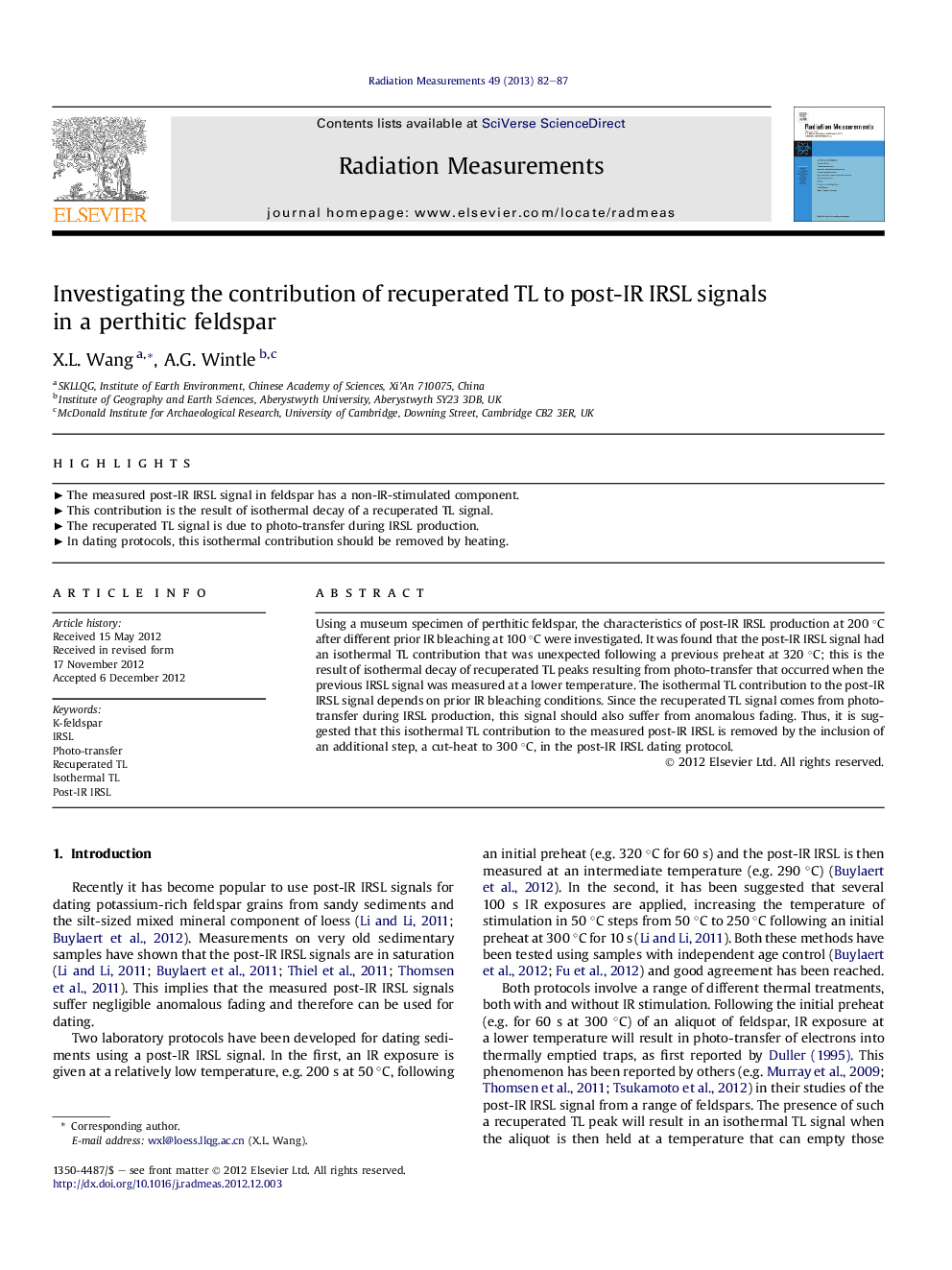| Article ID | Journal | Published Year | Pages | File Type |
|---|---|---|---|---|
| 1888422 | Radiation Measurements | 2013 | 6 Pages |
Using a museum specimen of perthitic feldspar, the characteristics of post-IR IRSL production at 200 °C after different prior IR bleaching at 100 °C were investigated. It was found that the post-IR IRSL signal had an isothermal TL contribution that was unexpected following a previous preheat at 320 °C; this is the result of isothermal decay of recuperated TL peaks resulting from photo-transfer that occurred when the previous IRSL signal was measured at a lower temperature. The isothermal TL contribution to the post-IR IRSL signal depends on prior IR bleaching conditions. Since the recuperated TL signal comes from photo-transfer during IRSL production, this signal should also suffer from anomalous fading. Thus, it is suggested that this isothermal TL contribution to the measured post-IR IRSL is removed by the inclusion of an additional step, a cut-heat to 300 °C, in the post-IR IRSL dating protocol.
► The measured post-IR IRSL signal in feldspar has a non-IR-stimulated component. ► This contribution is the result of isothermal decay of a recuperated TL signal. ► The recuperated TL signal is due to photo-transfer during IRSL production. ► In dating protocols, this isothermal contribution should be removed by heating.
